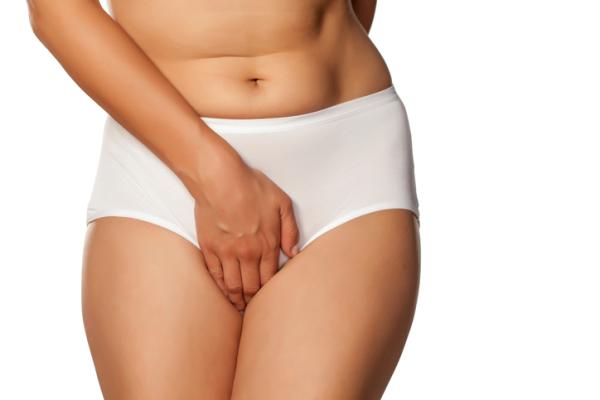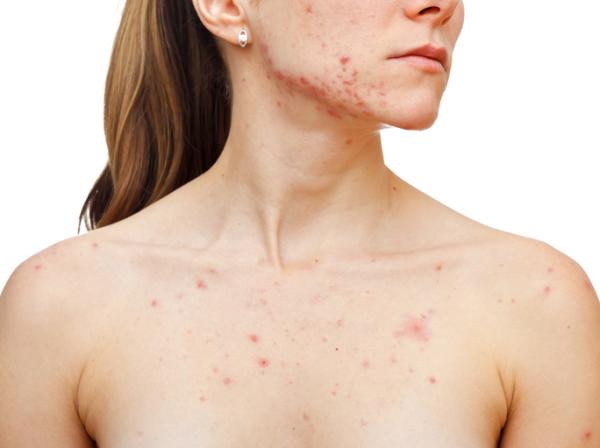Have you noticed a pimple or bump in your vaginal area and are looking for treatments to remove them? Before that, it is important that you know what causes its appearance, because although most of the time the genital pimples do not constitute a serious health problem, in others, and depending on what their characteristics are, they can be a consequence of some type of infection or sexually transmitted disease. In the latter cases, you should be very attentive to the symptoms that accompany the skin lesions present on the genitals. Pay attention to this article from in which we show you how to cure pimples on the vulva depending on what the original cause of them is. However, if you have any questions, it is best to consult with your gynecologist.

Pimples on the vulva from hair removal
In many cases, the appearance of a pimple on the vulva is a symptom of folliculitis (inflammation and acute superficial infection of the hair follicle) caused by hair removal from the intimate area. What happens, in this case, is that the hair grows under the skin and cannot come to the surface, which ends up causing the hair follicle to become infected and inflamed giving rise to a pimple that looks red, inflamed and pus. In addition to this, ingrown hairs or cystic hairs in the vaginal area can also cause quite a bit of pain and discomfort.
Below, we show what are the steps to follow to cure pimples on the vulva caused by folliculitis that appears as a result of hair removal:
- First of all, it is important that you observe what is the state in which the grain is. If you see that it is very inflamed and red, causes you a lot of pain or you have a serious infection, it will be essential that you go to the doctor so that they can treat it through the appropriate procedures. You may be prescribed some antibiotic medication for the infection or the application of a local drug. On the other hand, the doctor will assess the possibility of whether it is necessary to extract the ingrown hair through a simple intervention that is performed on an outpatient basis.
- It is not convenient that you squeeze or try to burst the grain, as this could generate a more serious infection. A good solution is to apply some hot water compresses in the area so that the ingrown hair comes to the surface on its own. To do this, you just have to soak gauze in hot water and place it on the grain for about 5 or 10 minutes. You can also make use of gauze soaked in an infusion of chamomile or mauve, as both plants are excellent for fighting inflammation and bacteria.
In addition to the above, we advise you that before shaving the intimate area you take into account some measures that can help you prevent this type of pimples:
- Before hair removal, wash the vaginal area with water and a neutral pH soap or a specific intimate soap. Thus, the pores will open more easily and possible infections will be avoided.
- Shaving pubic hair with a blade is the method that causes the most cystic hairs, so it is important that if you are going to shave in this way, you use a shaving foam and a blade with several sheets and bands of gel integrated into the head.
- Avoid dry shaving and remove the hair always following the direction of its growth.
- If you are going to perform a hair removal with cold war, try not to use the same strip or band several times.
- At the end of the hair removal, moisturize the skin of the area well with a body moisturizer.
Pimples on the vulva by fungi
If you have several pimples on the genital lips and inside the vagina and, in addition, you have itching, stinging, burning and irritation, it is very likely that it is due to a fungal infection. The candida fungus albicans is the most frequent microorganism that usually causes this type of vaginal infection, which occurs when this yeast grows exaggerated in the vaginal area.
Among the most common causes of this condition, we find the consumption of antibiotics, having a weak immune system, obesity, diabetes, hormonal alterations, pregnancy or the use of aggressive and irritating intimate hygiene products.
Other symptoms that can alert you that you suffer from vaginal yeast are alterations in vaginal discharge, which is presented with a white, thick and watery color and discomfort when urinating or having sex.
In this case, the treatment for pimples in the vagina should be as follows:
- Initiate antifungal treatment through the use of antifungal medications, which may be prescribed in creams, suppositories, or vaginal eggs or pills. You should follow medical instructions and not stop treatment early.
- It is also advisable to stop sexual intercourse temporarily until the infection has completely healed, as there is a risk that the man will also have symptoms of genital fungi after sexual intercourse.
- In order not to worsen the symptoms and prevent new infections, measures are recommended such as: keeping the vaginal area clean and dry, avoiding douching, not using aggressive hygiene products, using condoms in all sexual intercourse, wearing cotton underwear and controlling blood glucose levels in case of being diabetic.
In the following article, you can see in more detail How to cure vaginal yeasts.
Pimples on the vulva from HPV
It is important to differentiate pimples from warts in the vagina, as the latter are lesions that can be caused by the human papillomavirus (HPV), one of the most common sexually transmitted diseases today. Genital warts are easily spread when they come into direct contact with the skin of a person carrying HPV and are characterized by being a kind of bumps or masses of the same color as the skin, soft to the touch and that can appear in isolation or together forming a kind of cluster. In the case of women, they usually appear inside the vagina, on the skin that surrounds it or on the cervix.
In the case of suspecting that the pimples present in the vagina could correspond to genital warts, you should go to your gynecologist to undergo the appropriate tests. If the diagnosis is confirmed, it is important to keep in mind that there is no definitive cure for HPV, but there are treatments to eliminate these warts and control the symptoms, these are the following:
- Application of topical medications to the affected area.
- Application of trichloroacetic acid to the area with warts. This treatment can only be performed by a professional doctor.
- Taking antiviral medications to fight the HPV virus or medications to strengthen the immune system.
- Other procedures or techniques to remove genital warts such as cryotherapy, laser, electrocautery, or surgery.
In addition to proper treatment, sexual intercourse should be avoided while warts are present to prevent contagion or reinfection.
Pimples on the vulva from other STDs
There are other sexually transmitted diseases that can cause lesions on the skin of the vaginal area and lead to think that they are simple pimples, although the truth is that in this case, they look different and have specific characteristics.
Genital herpes
One of these STDs is genital herpes, which is caused by the herpes simplex virus type 2 and is manifested by the appearance of a kind of small blisters filled with a light-colored liquid. In addition, these lesions cause pain and usually occur on the labia, vagina, skin around the anus, cervix, thighs, or buttocks. Other symptoms that may accompany these blisters are muscle aches, fever, loss of appetite, swollen lymph nodes in the groin, and discomfort when urinating.
To treat genital herpes, the affected person should take antiviral medications, such as acyclovir or valacyclovir, which help fight the causative virus and heal blisters more quickly.
Molluscum contagiosum
This is an STD caused by a virus of the Poxvirus family that causes the appearance of papules or nodules with a shape similar to that of pearls on the skin of the genitals, inner thigh or abdomen. In this case, the skin lesions do not cause pain and, at first, a small protrusion can be observed, which can grow until it becomes a flesh-colored nodule with a dimple in the center.
Treatment of molluscum contagiosum may include the use of antiviral medications, curettage removal of skin lesions, or removal of skin lesions through cryotherapy or laser.
Pimple in the vagina or bartholinitis?
Finally, it's also important to pay attention to a condition that may lead you to believe you have a pimple in your vagina, such as bartholinitis. This refers to the inflammation of the Bartholin's glands, located on the sides of the vaginal opening, which usually happens due to bacterial infections or sexually transmitted diseases. When inflammation of one of these glands occurs, the woman may feel a round, touch-sensitive lump on one of the genital lips right next to the vaginal orifice. In addition, if there is infection, this lump can cause severe pain when sitting, walking or having sex.
To treat bartholinitis, you should consult with the gynecologist and undergo appropriate tests. When the cause is a bacterial infection, antibiotic medications will be prescribed to kill the pathogen. Painkillers and anti-inflammatories may also be prescribed to lessen symptoms. You can see much more details in the article How to treat bartholinitis.







